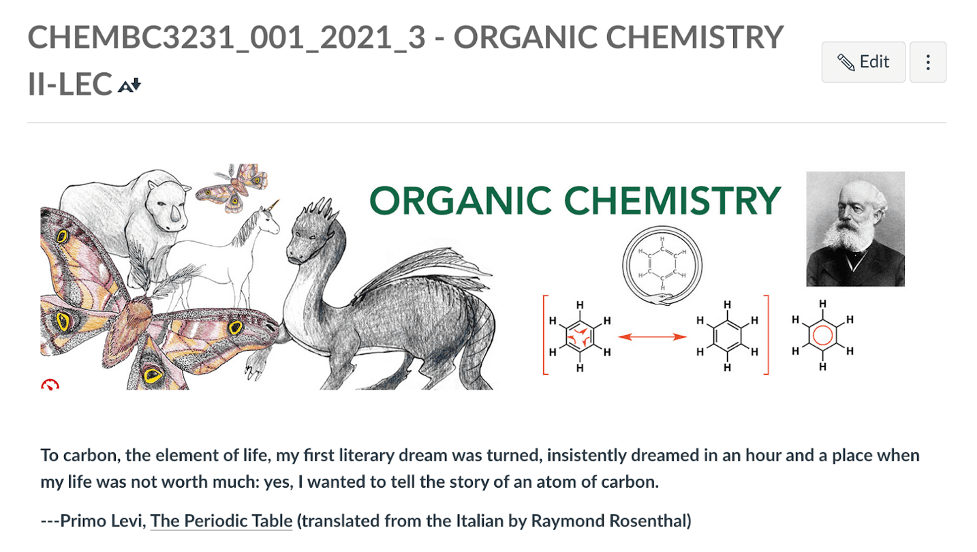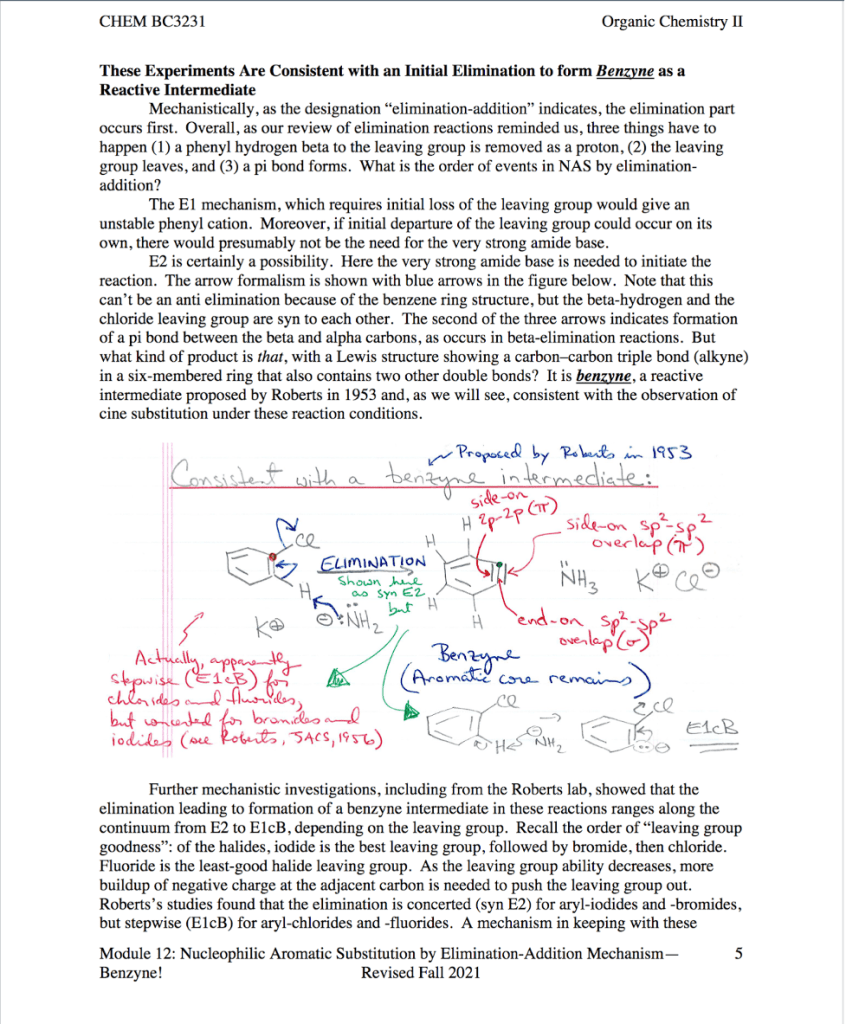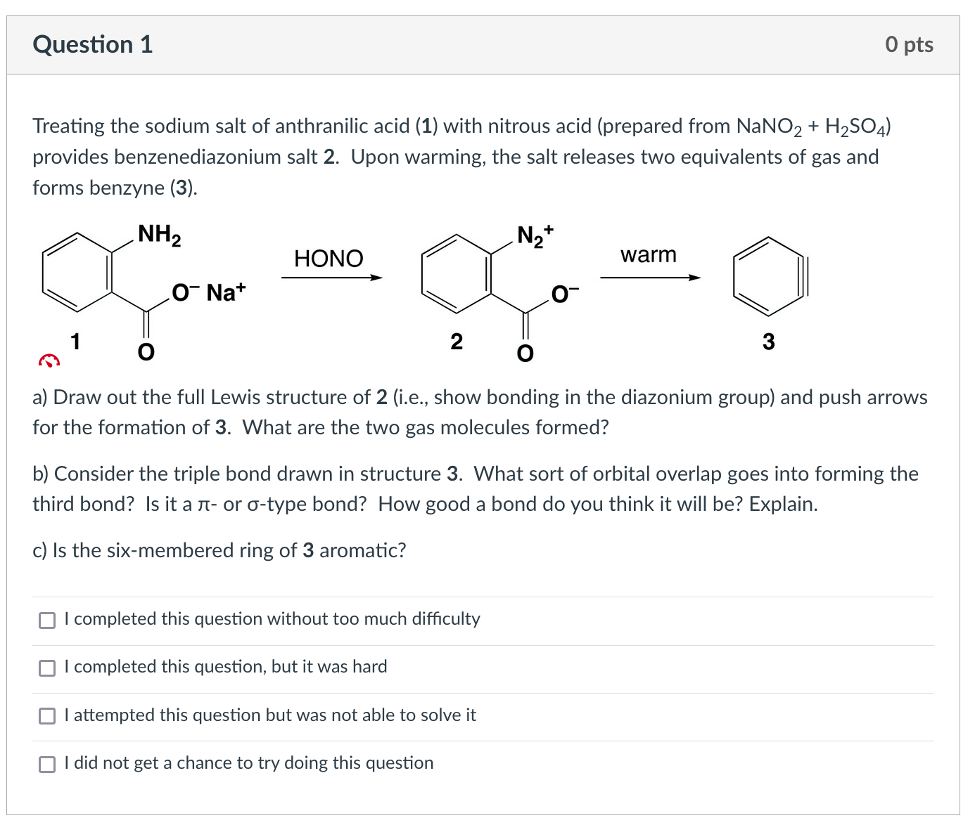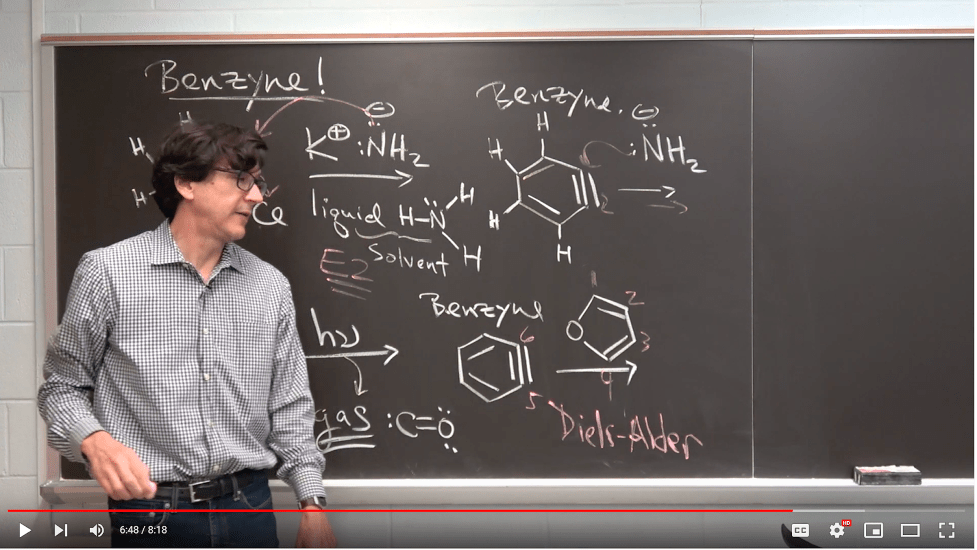
Dr. Christian Rojas, PhD
Professor of Chemistry at Barnard College
Dr. Christian Rojas teaches the introductory organic chemistry sequence—Organic Chemistry 1 and 2—at Barnard College. These classes have large enrollments of up to 160 students and were traditionally lecture-based. Dr. Rojas also previously developed and taught the Advanced Chemical Synthesis Laboratory, which includes a Course-based Undergraduate Research Experience (CURE). This lab course and CURE continue to be taught by other Barnard Chemistry faculty and instructors, especially Dr. Jean Vadakkan and Dr. Judith Kamm, and has resulted in a recent peer-reviewed publication in Scientific Reports. With the shift to remote teaching in Spring 2020, Dr. Rojas met the moment by transforming his Organic Chemistry courses—focusing class time on problem-solving, providing flexibility with exam duration, and leveraging undergraduate assistants. Read on to learn more about what Dr. Rojas did in his course, what lessons and experiences he’s carrying forward, and the advice he has for other instructors at Columbia.
Focus Class Time on Problem-solving
When the pandemic started, it became intolerable for me to lecture on Zoom. The whole “sage on the stage” model is problematic to begin with, but translating that to a Zoom or online setting is just horrible. You could get some recording of a robot talking and drawing on an iPad, and it would be the same thing. You don’t even get the big performance or show that you get when you’re in a lecture hall with everybody together.
So at that point I did something I had resisted doing in the past, which was to simply give the students my lecture notes up front. They could read and digest the notes, or ignore them. But once I was free of having to reproduce my notes in front of the class through lecturing, we could spend class time solving specific problems together instead. This concept of teaching in a problem-solving-based fashion, what is now known as active learning, has a long and semi-distinguished history in organic chemistry, because organic chemistry is all about solving problems. Students may understand the theory, but when it comes time to solve a specific problem, they can get derailed if they don’t have sufficient practice solving problems.
And rather than just giving my lecture notes out, I’ve essentially turned my lecture notes into a textbook so the students can read the information in a more narrated, illustrated, example-based way prior to class. Of course, some people do and some people don’t, but in class, we really spend time solving individual problems. For each class, I prepare five top concepts that students have to be able to solve problems about, and then in class we try to do one representative problem for each of those concepts. I’ll get them started on the main ideas, then students break up into groups of three or four and work on each problem for five to eight minutes. One of the challenges has been staying on schedule and moving things along. Otherwise, you might only be done with the second of five problems when the time is up.
The class is divided into topics—I call them modules in honor of CourseWorks (Canvas). There’s 32–33 modules for a semester. For each module, there’s a chapter writeup with examples that students can read over before class. I identify four or five key concepts for that particular module, and illustrate each of those with an example. These examples are comparable to the ones that students would get on an exam. They do range in difficulty, though, because at this point students are getting introduced to the topic. The in-class questions are also comparable to the questions on the exams, and there are many, many practice problems I assign that are separate from those in-class problems, like the homework problems, which are all through CourseWorks (Canvas) as well. Every module follows this organizational system—each module has a Before Class portion, an After Class portion, and an Extra Practice portion—so there are problems of varying difficulty that students are able to practice solving.
Provide Flexibility with Exam Duration
Another thing I did differently last fall was I stopped giving the exams during the fifty-minute class period. The introductory organic chemistry sequence uses the fifty-minute, three-times-a-week class schedule, and a big issue has been, “How can you show what you know about organic chemistry in fifty minutes?” It’s stressful for everybody and shortchanges people who just need a little more time to show what they know. I was able with the funding from Barnard’s Innovation in Teaching grant to hire some extra proctors and set up exam rooms on the exam day, where there would be a window of three hours for people to come in and take their exam, and they could take up to two hours to do a fifty minute exam. That gave students a much better opportunity and decreased everyone’s stress levels. The other nice thing was, because a lot of the students who have testing accommodations have the accommodation for time and a half, those students, if they wanted to, could just take the whole three-hour block. I usually have maybe twenty students in the class who take their exams with the testing facility for the accommodation, but last fall, almost everybody decided to come and take the exam with the rest of the class, so that worked out very well.
The other thing I did with the exam rooms was to have one of the exam room times overlap with class time, since we wouldn’t have class on the day of exams. So one of the exam rooms was 8–11 am, which overlaps the class time of 10–10:50 am. Even if students couldn’t adjust their schedule too much, in principle, the exam was doable in fifty minutes. It’s just now, instead of having fifty minutes, students have two hours to do it. I’m going to try doing the same thing this semester as I did last fall, just to see if it still works.
Leverage Undergraduate Assistants
Our Provost was very good about saying, “This is a big shift and a big challenge for everybody to move classes online. We’re going to try to give you some support in terms of personnel.” And working with the undergraduate students has been great. It’s a valuable experience for them, and budgetarily, it works. If they’re students who have taken the class recently, they also know the content and what’s involved. I hired a cohort of what I call problem-solving coaches—undergraduate students who’ve taken the class before and are excited about organic chemistry. During the parts of the class where the students are working in small groups, the problem-solving coaches and I would circulate around and see how people are doing, since I alone can’t get to everybody. It’s been really great to have these problem-solving coaches. Since they have the student perspective on things, they also give useful feedback, like on the problems that people seem to be struggling with, or on how to structure things better.
Advice for Instructors and the Future of Teaching at Columbia
Use class time for problem-solving rather than lecture.
Courses in which students learn general theory and principles with the ultimate goal of applying the theories and principles to solve specific problems would be amenable to using class time for problem-solving rather than lecture. In organic chemistry, there’s a thought process that one moves through—from first encounter with an unknown problem, to connections to previous material, to applying a skill set. These are complex things students have to learn to do, and students cannot learn to do these things just by reading through the chapter or highlighting passages. On the exam, we do not ask students to write a paragraph about a given reaction. Rather, we present an example, and ask students to predict what will happen or explain what already happened. It’s a diagnosing task, and the best way to learn that is by solving problems. Thus, the goal of class time is to get students started solving problems on a particular topic. Then they need to do additional practice with the homework, coming to office hours, and visiting the organic chemistry help room. I urge fellow instructors to think about whether the material they’re teaching is amenable to this type of class format.
Advocate for large classroom spaces that allow for Active Learning.
The pandemic-enforced Zoom hybrid system required me to teach the class in two separate, physical rooms simultaneously. We have one room that seats about one hundred students, and an adjacent room that seats about fifty students. They’re both very modern rooms with all the necessary AV and microphones. I would be in one room, and the other room would have a student assistant who was running Zoom. Essentially that enabled me to have two rooms going at the same time and accommodate everybody. It was kind of fun.
Looking forward, we need to think about the physical infrastructure for students in large enrollment courses to work in small groups. At present, we don’t have any spaces that can accommodate the number of students that are typically enrolled in an introductory-level science class. It’s really hard to work in small groups when students are sitting in a stadium-style lecture hall because, unless they’re very flexible, it’s hard for students to turn around and talk to their peers. There are two approaches you could take. One is to decrease the size of the introductory science courses by having more sections, which would require more people to teach and thus raises a different issue. Or, we could have more flexible teaching spaces with movable walls or movable seating so instructors can use the space for multiple purposes with a little bit of rearranging. I think that’s important.
Make teaching enjoyable for the instructor as well.
We must not discount the morale and mental health of the instructor. For me, as an instructor, it’s actually a lot more fun to teach in this active learning way. I still get to tell jokes and have a captive audience, but I’m also always looking for new problems as I read the literature, and I’m frequently coming across things that I think would be great problems to include in a given module.
One of the reasons traditional lectures persist is that some people are very good at lecturing and holding the attention of a room. I actually enjoy that a lot, but after doing so for twenty five years, you start to think, “Is this really the best approach? Well, I’d like to try something a little bit different.” It’s taking into account how effectively you are teaching people and how effectively students are learning, but also acknowledging that the class is just going to be better if the instructor is also enjoying the experience.
Teaching Artifacts

Figure 1: Canvas homepage

Figure 2: Canvas Module Components. Note: BC – Before Class, AC – After Class, EP – Extra Practice

Figure 3: Before Class – Module write up (pre-class reading) example

Figure 4: During Class – In-Class Problems – Key Concepts examples

Figure 5: After Class – Practice problem example

Figure 6: After Class – Problem solution example

Figure 7: Problem solving video example (Note that there is a video accompanying each Before Class, After Class, and Extra Practice module)
CURE research published: https://barnard.edu/news/barnard-researchers-publish-new-chemistry-study-explores-how-drug-molecules-inhibit-key-class